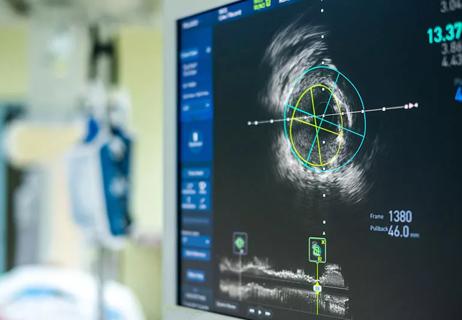Explaining the best operation available today

Every year in the United States, about 270,000 patients undergo coronary artery bypass grafting (CABG) to reroute blood around blockages in the arteries feeding
their heart muscle.
Advertisement
Cleveland Clinic is a non-profit academic medical center. Advertising on our site helps support our mission. We do not endorse non-Cleveland Clinic products or services. Policy
When a single bypass is performed, the gold standard is to attach the left internal thoracic artery (LITA), which runs inside the chest wall, to the left anterior descending artery, the most important coronary artery. But when more than one bypass graft is needed, most surgeons use a saphenous vein from the leg.
A recent study found that using the radial artery from the arm produced a superior, longer-lasting result.
“When radial artery grafts were used, the bypasses stayed open longer, and patients were significantly less likely to suffer a heart attack or need another revascularization than when the saphenous vein was used,” says heart surgeon Faisal Bakaeen, MD.
Stripped from the leg, the saphenous vein makes a long, clean, pliable conduit. But veins aren’t designed to carry blood under pressure. Their walls don’t expand and contract. About 6 to 8% of saphenous veins clog before the patient leaves the hospital. By one year, 10% are diseased or occluded. Obstructed veins can trigger chest pain or heart attack — events CABG is performed to prevent.
The disease process accelerates in saphenous vein grafts between five and 10 years after CABG, requiring the majority of patients to have another revascularization procedure to prevent a heart attack.
Advertisement
So why do surgeons choose the saphenous vein rather than the radial artery in 90% of cases?
Surgeons want to perform an expeditious and safe operation that gets their patients out of the hospital fast. Long-term outcomes are not tracked. Until now, there has been little incentive to use multiple arterial grafts. It makes the procedure more technically difficult and longer and increases the risk of infection at the surgical site.
Arteries carry oxygenated blood away from the heart under high pressure. Their walls are flexible, which allows them to accommodate changes in blood flow. It’s this innate flexibility that enables artery grafts to remain free of atherosclerosis indefinitely.
In the meta-analysis of 1,036 patients, use of a radial artery as a second bypass conduit reduced the combination of death, heart attack and revascularization by
33% over saphenous vein grafts. Revascularizations fell by 50% and heart attacks by about 30%. Complications were especially low in patients younger than age 75, in women and in patients with good kidney function.
The study examined only outcomes up to five years after CABG. At this point, no difference was seen in survival rates with either the vein or artery graft. But other studies have confirmed that a second arterial graft significantly increases the likelihood the patient will be alive 10 years after CABG. Cleveland Clinic and other major heart centers follow Society of Thoracic Surgery guidelines and use an artery as a second conduit whenever possible.
A larger international study of artery versus vein grafts is underway. When this study of 4,300 patients wraps up in 2028, Dr. Bakaeen expects the reputation of the radial artery to be cemented. But even now, evidence points to saphenous vein grafts as being an inferior choice.
“Patients undergoing elective CABG might want to ask their surgeon what grafts will be used,” Dr. Bakaeen says. “If the answer is saphenous veins, they might want to seek a surgeon with experience using the radial artery. The decision could impact the likelihood of having complications after surgery, as well as surviving 10 years or longer.”
This article originally appeared in Cleveland Clinic Heart Advisor.
Advertisement
Learn more about our editorial process.
Advertisement

Most recommended precautions center around minimizing bruising or swelling

Even one drink can have an impact on your cognitive function leading to slurred speech, blurred vision and impaired memory

Understand who may (and may not) benefit

Lorem ipsum dolor sit amet. Et odio Quis vel ipsam omnis eum alias deleniti et placeat impedit non voluptas galisum hic autem enim et cupiditate aliquid. Est beatae quidem non facilis autem ut commodi nisi aut tempore rerum et dolores voluptatem cum enim optio id sapiente quasi. Ad laboriosam officiis 33 cupiditate sequi ea voluptatum consectetur qui necessitatibus voluptate et quasi doloremque et facere explicabo quo explicabo officia

Seeking help through therapy can be an important step in improving your quality of life when you have UC

Type 2 diabetes isn’t inevitable with these dietary changes

Applying a hot or cold compress can help with pain